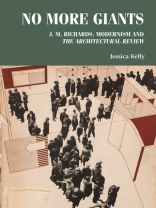Architecture is more than buildings and architects. It also involves photographers, writers, advertisers and broadcasters, as well as the people who finance and live in the buildings. Using the career of the critic J. M. Richards as a lens, this book takes a new perspective on modern architecture. Richards served as editor of
The Architectural Review from 1937 to 1971, during which time he consistently argued that modernism was integrally linked to vernacular architecture, not through style but through the principle of being an anonymous expression of a time and public spirit. Exploring the continuities in Richards’s ideas throughout his career disrupts the existing canon of architectural history, which has focused on abrupt changes linked to individual ‘pioneers’, encouraging us to think again about who is studied in architectural history and how they are researched.
Cuprins
Introduction
1 Critical connections: Jim Richards’ network 1924–38
2 What is wrong with architecture? The Architectural Press, the profession and the architectural public
3 ‘Cranks and laymen’: Propaganda for modern architecture 1935–41
4 The Castles on the Ground: Reconstruction, public participation and the future of modernism, 1941–51
5 Stocktaking: The contesting voices of architectural criticism, 1951–61
6 ‘Life is Right, the Architect is Wrong’: Public participation and architectural criticism 1962–73
Postscript
Bibliography
Index
Despre autor
Jessica Kelly is Reader in Architectural and Design History at the University for the Creative Arts












